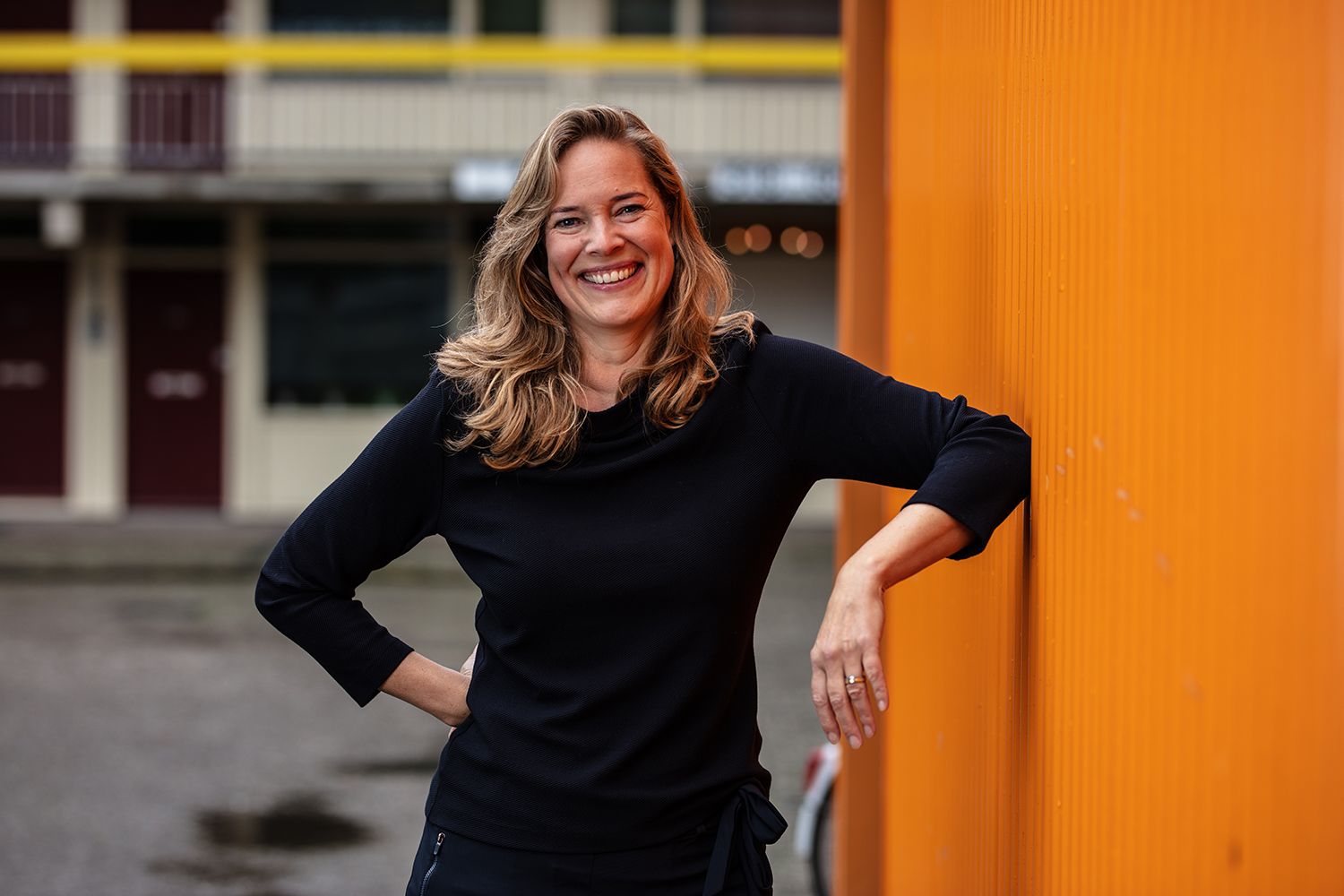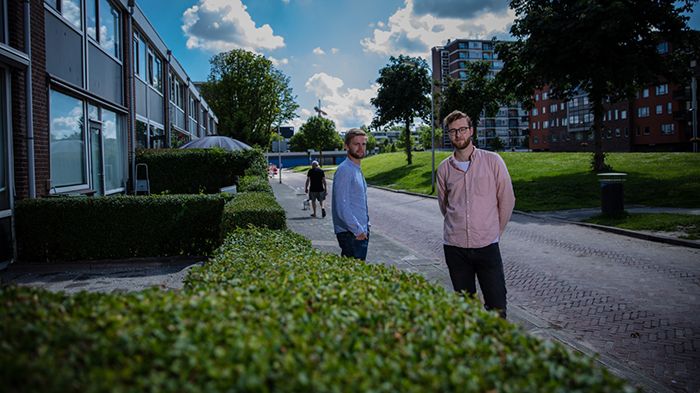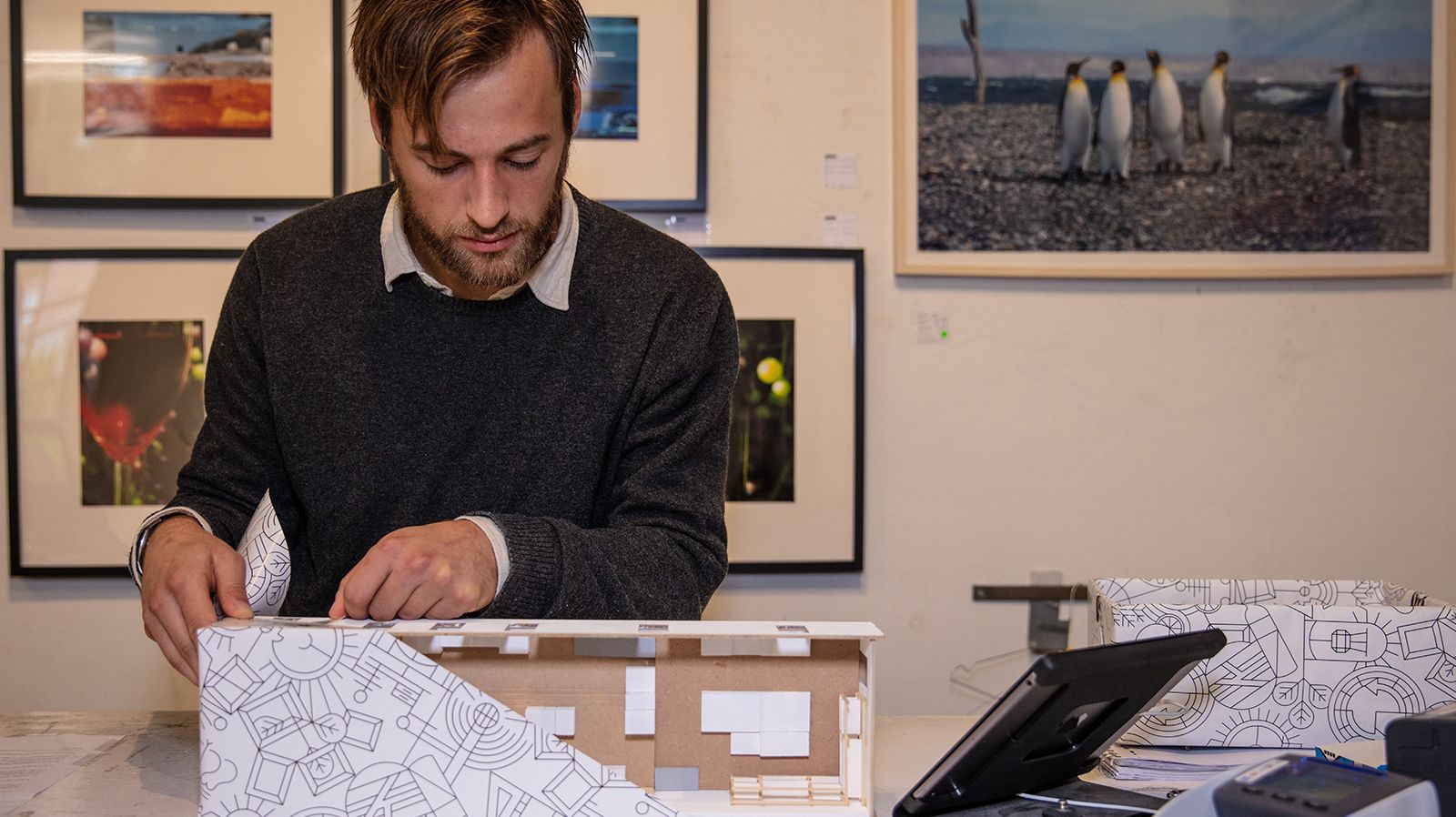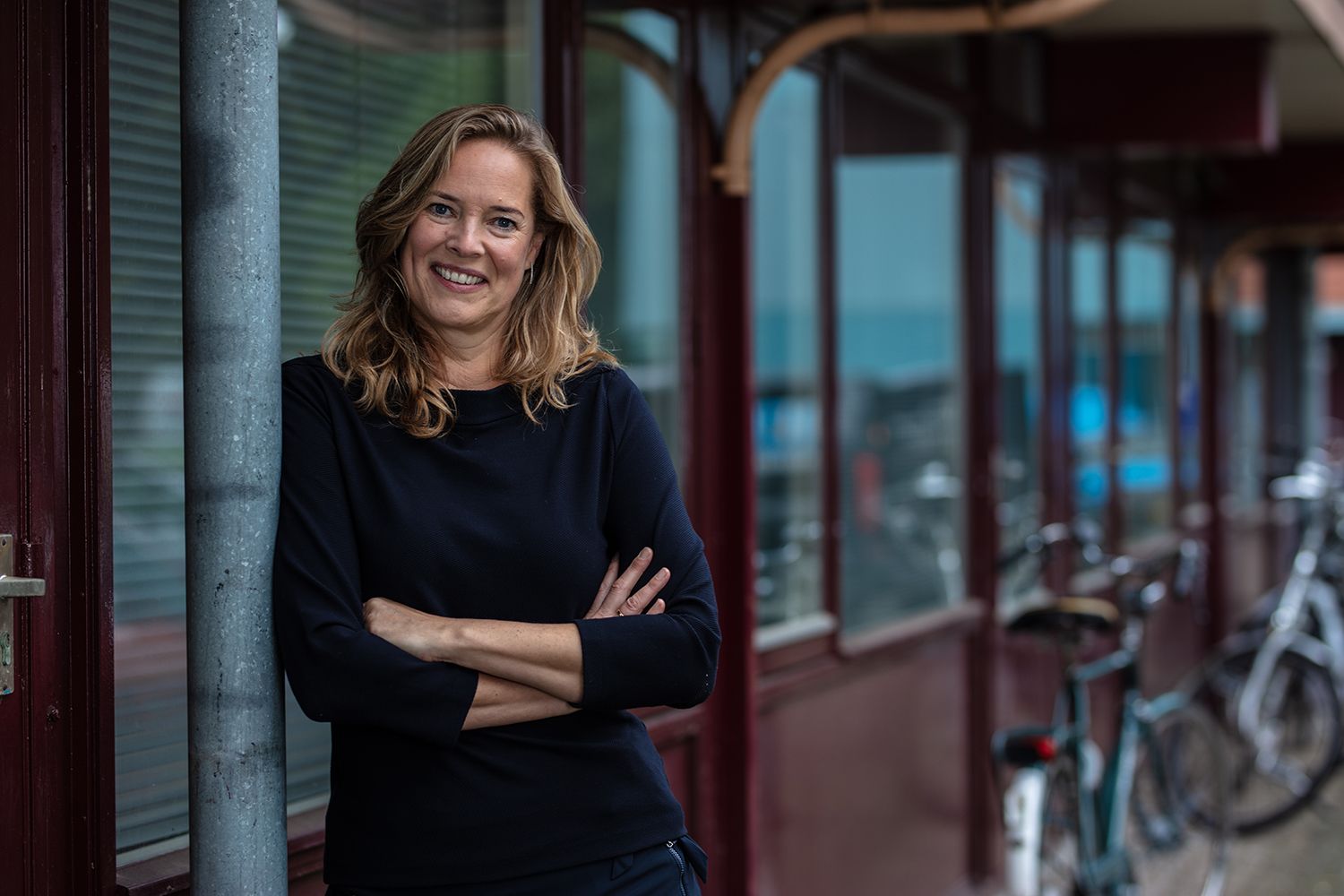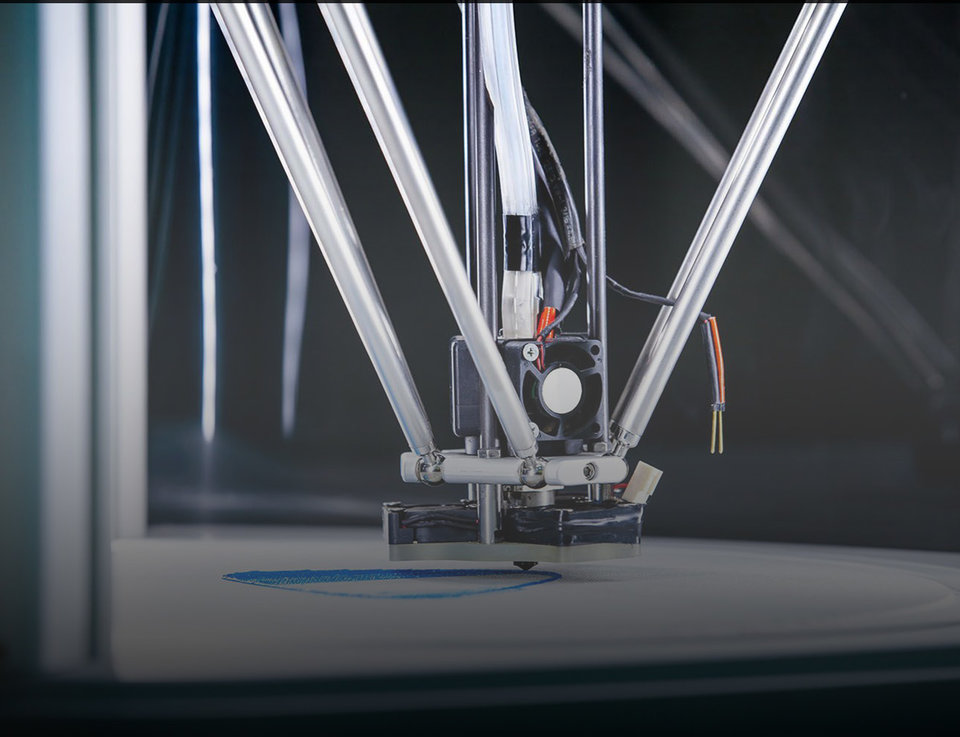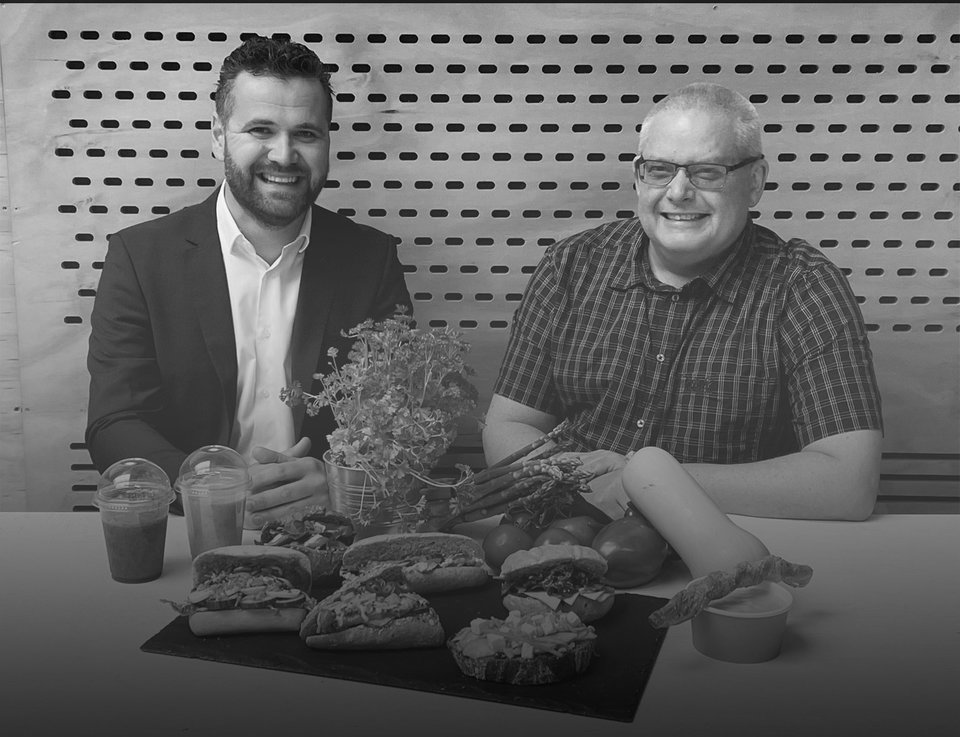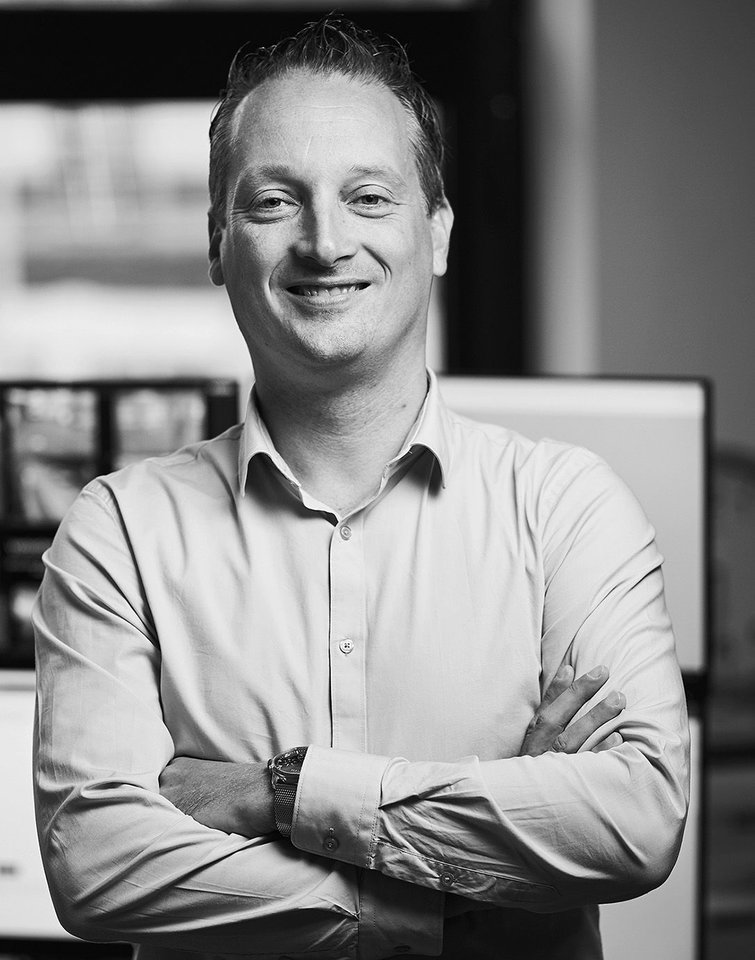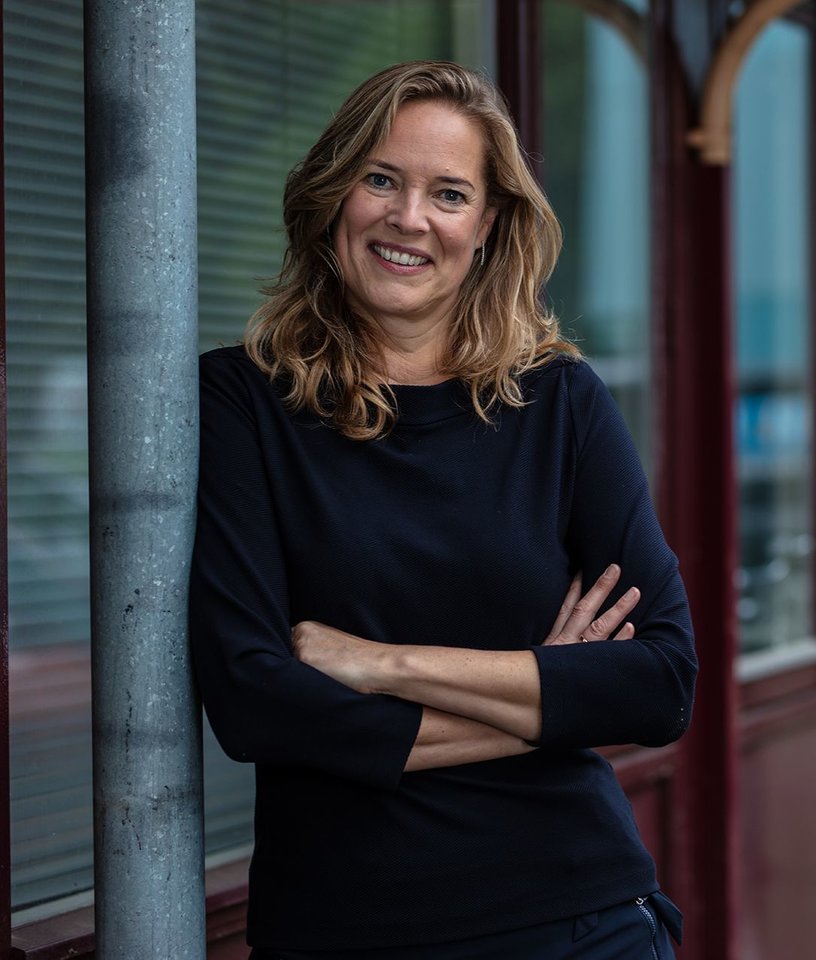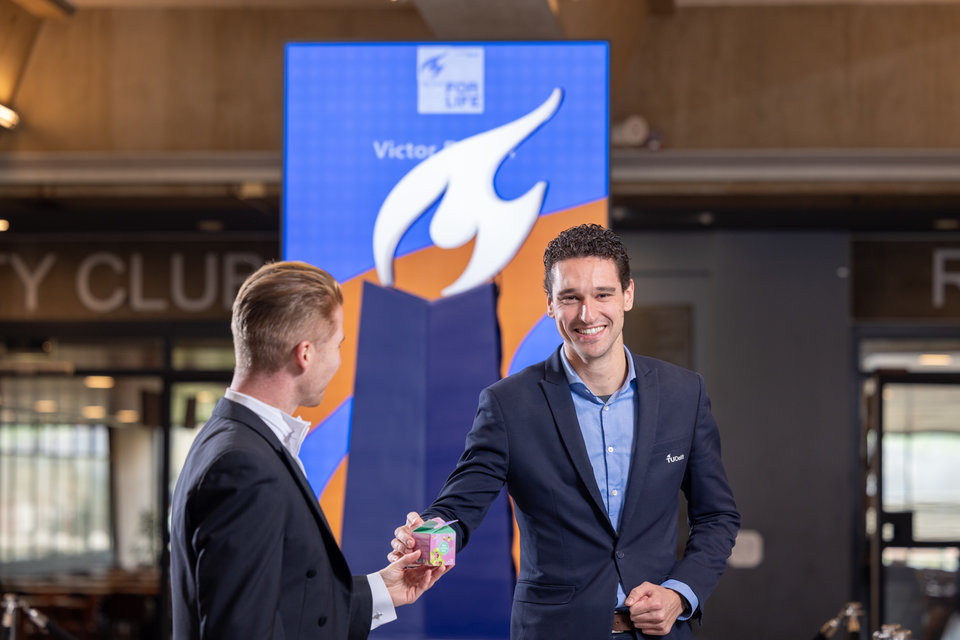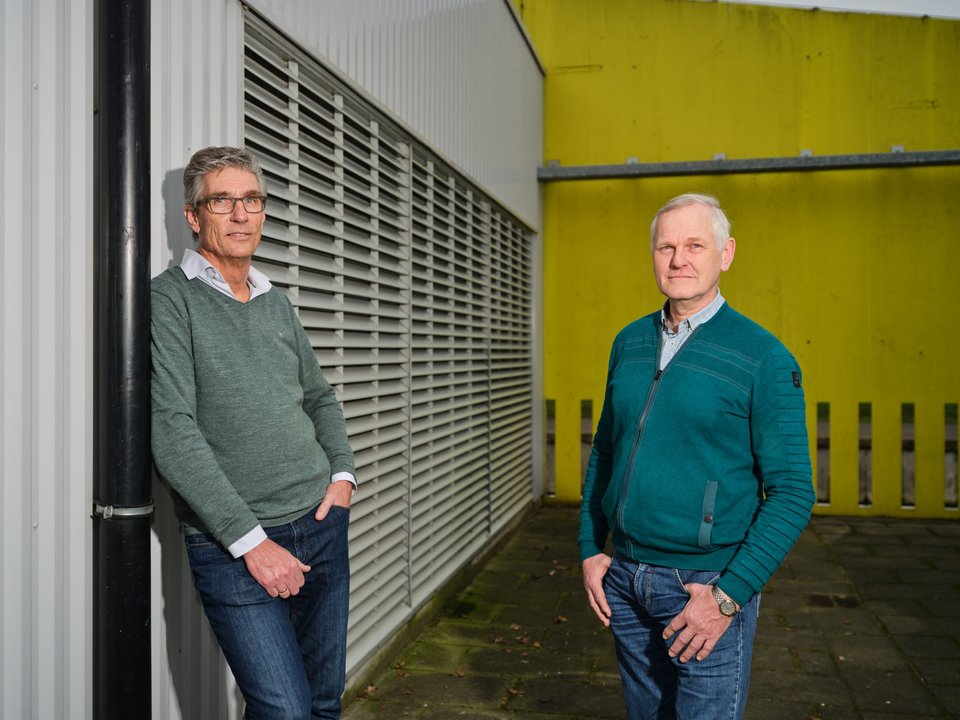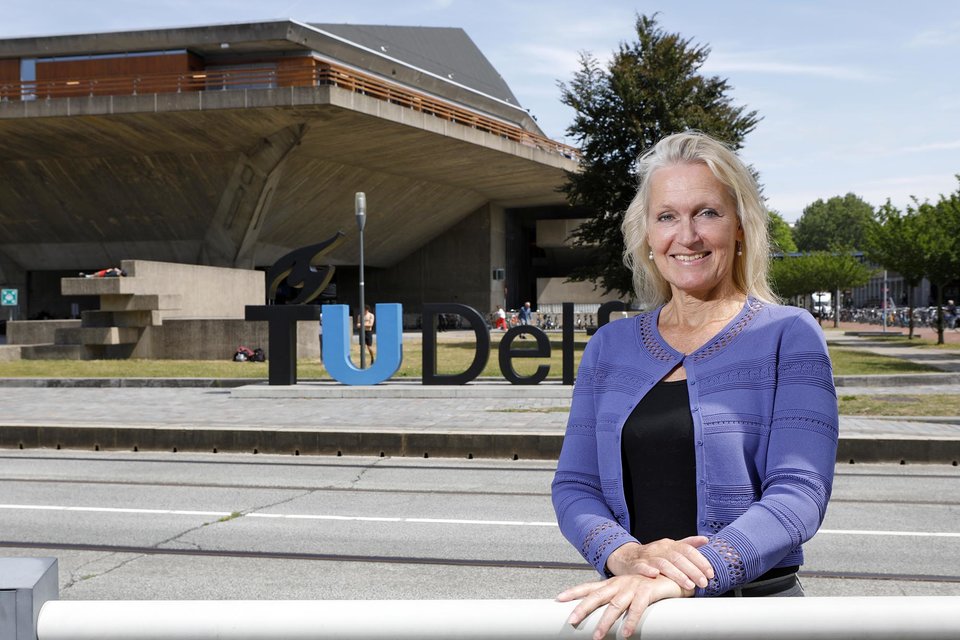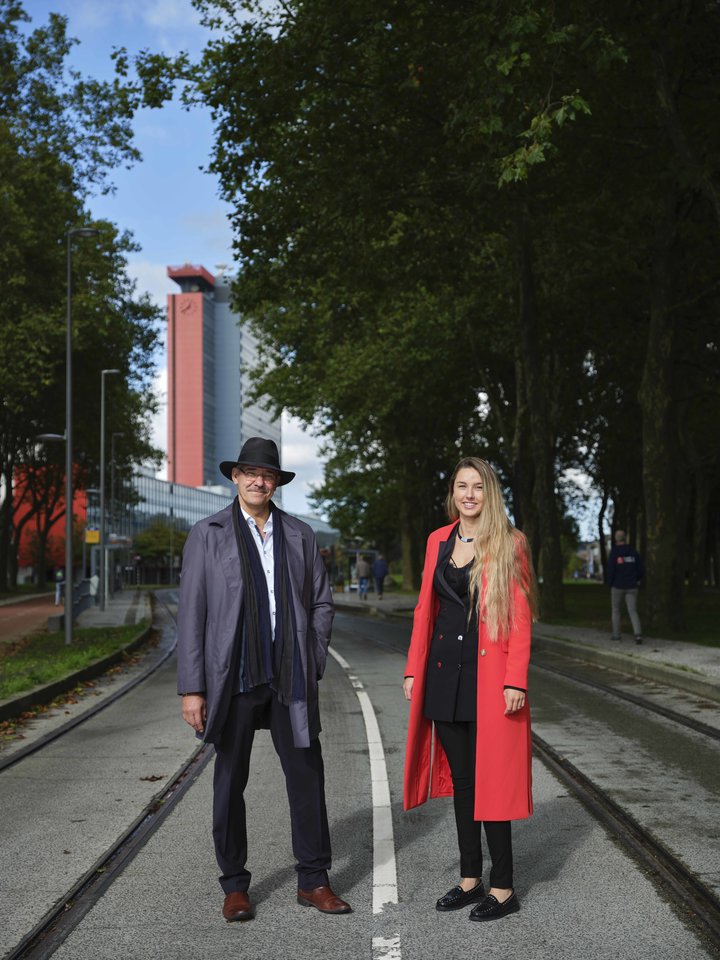When she was communications manager at Civil Engineering and Geosciences (CEG), Pieke Hoekstra brought storytelling to TU Delft. She now leads the Community Engagement & Outreach team and works closely with (residents of) the city of Delft. Storytelling is still her preferred solution. “I come across the same kind of questions: what is a story and what is the best way to show and share it?
Roads, bridges, water purification, climate: research at CEG affects our daily lives, often in a very tangible way. That was the first thing Pieke Hoekstra noticed when she joined the faculty as a communications manager. However, the results of the research were usually hidden away in papers and posters, and not accessible to a wider audience. “That translation had yet to be made,” she says. “At the time, I read a lot about storytelling and decided to start writing stories about what happens at the faculty. In theory, they could be about anything; I wanted to hear everything. Whether there really was a story in it, we could determine afterwards.”
Walking around all the time
The search for stories brought Hoekstra and her team – including communications advisor Karlijn Spoor and storyteller Annelies de Bakker – all over the Faculty. “CEG works with some fifty ‘story hunters’: colleagues in the labs, for example, who are more than average aware of what is happening. It was even more effective if I walked around myself all the time. I joined meetings to explain what we were doing, and showed my face at every office do,” says Hoekstra. “With my campus card, I also had access to CEG's three large labs. At some point you get a kind of sixth sense for new things. I had to, because if I turned my back, I could easily miss three new research setups.”
Not everything turned out to be story material, though. “Once, a Chinese researcher was in Alaska during the holidays. That seemed like a wonderful Christmas story, with photos on top of walls of ice or something like that. As it turned out, he just spend three months in a small office behind his PC, so there was no story in that”, she remembers. “But it was this curiosity, this wanting to know what every researcher is doing, that was crucial.”
'If we let researchers and students
work together on the city’s challenges,
you stay true to yourself as a university.'
Preferably halfway
“I came to understand much better how scientists work and how they organise their time, and that there are may times when they really don't think about communication,” she continues. “They tend to inform the communications department about it when the research is finished and they have submitted their article or thesis. Then they have time for communication, and they are also sure that there are results. Researchers are often reluctant to show how things are getting along when they are halfway through, but that's the most exciting time. As a storyteller, you also want to be there halfway through to be able to take cool photos.” One thing soon became clear: an appealing image is indispensable for the success of a story, but opinions often differed as to exactly what that was. “I often got told that there already were lots of photos, but then these would only be of the cracks in a tunnel wall, for example. Important for the research, but I wanted images of researchers standing on towering ladders in a tunnel tube, or with their boots ankle-deep in the mud.”
Here too, walking around a lot proved the right strategy: “At one point I met a researcher in the water lab who had bought 10,000 plastic plants from the garden centre for his research into the influence of vegetation on riverbeds. That was so photogenic, he’d constructed a complete riverbed in which all that vegetation had been planted manually,” says Hoekstra. “And because we were involved from the start, his story even made it into the Volkskrant newspaper. I noticed that you have a much better chance of attracting attention with these kinds of images. This gave me an increasing sense of what worked and what didn't, and what could be a good story.” The approach was a success: “At a certain point, researchers started to contact us because they had seen stories from colleagues and wanted something similar. I hadn't expected that when I started.”
Story on the shelf
The original goal was mainly to showcase the research to the outside world, but it soon became clear that there were many more applications. “Stories were not only picked up by the national media or trade journals, but scientists also began to send them along with subsidy applications. And I noticed that researchers often didn't know from each other what they were doing, even though they wanted to cooperate more. Storytelling could also help with that”, says Hoekstra. The Corporate Communication department also became interested: “Our active searching gave us a great deal of insight into what was happening at the faculty. What's more, we often already had a background story on the shelf when someone got a doctoral degree, was given an award or received a large research grant. Normally, you can only publish a factual news item in such cases. The combination of storytelling and traditional communication with press releases, for example, is very powerful.”
Story platform
Fortunately, she left the CEG story platform, Stories of Science, in good hands. “That was very important to me; I would have been very sorry if that had fallen apart when I left.” Nothing could be further from the truth: “It is about to become a TU-wide platform with a lot of input from my old team.”
Hoekstra is now programme manager of one of the three themes in the covenant that TU Delft and the municipality of Delft signed in 2017, the 'University community, city and inhabitants' theme. “This is about connecting the TU Delft with the inhabitants of the city. It originated from the idea that we want to make a better version of Delft together. Volunteer work is a valuable part of this, but we can also add a great deal of thinking power to the city. If we let researchers and students work together on the city’s challenges, you stay true to yourself as a university. I've tried to set that in motion, by looking at where we can find common ground with education and research.”
City Deals
Delft is not the default choice for teachers and researchers. “We have everything in house to solve urban issues, and we have done that everywhere, from Shanghai to Amsterdam, but Delft is often overlooked. Sometimes Delft is simply too small, but sometimes there are actually quite a few possibilities. Together with the municipality of Delft, we are now focusing more on this, and try to link city issues with research and education projects.”
The wish to become more involved in social issues was widely shared at TU Delft. “If you look at the strategic framework, we very explicitly say that we are concerned with the question of what we are good for. Our relevance to our immediate environment is part of this. We are an international player, but we also want to be of regional significance. And we want to train our graduates to become socially involved, broad thinkers who can take on such issues.” That is a thing of our times. “There are now City Deals throughout the Netherlands: agreements between cities and their knowledge institutes to work together on the city's questions. Delft is also actively participating in this.”
This, in turn, requires a translation. “We are already very good at this ‘triple helix’, but it is precisely the fourth pillar, this social relevance, that is still very much in development. And sometimes we have to shift our mind-set to our immediate surroundings. As a university, we rightly look at the global grand challenges. But if you're talking about climate change, that might mean at a local level that the sewers are flooding through extreme precipitation,” says Hoekstra. “We have now set up a city lab in the Tanthof neighbourhood. We have created a knowledge agenda for the area, based on questions that residents came up with and what researchers could do with them. This concerns themes such as safety, heavy traffic and green spaces in the neighbourhood.”
Making a difference
Students are also closely involved. “As a university, we want to educate socially involved and versatile engineers who are used to dealing with all kinds of different people. It's very important then that students themselves go into the neighbourhood.” This is already happening within the Honours programme, where courses are linked to neighbourhoods in the city. “We are now also looking at how we can link subjects in the regular curriculum to city assignments.” This is well received by the current generation of students. “You notice that they themselves are more concerned with that 'what are we good for'. They no longer focus indiscriminately on a career with a multinational, but want to make a difference.”
Photos on the steps
Storytelling is still her preferred solution: “What struck me immediately is that we don't share many stories with the city, while lots of things are happening. But that question of what a story exactly is, also plays a role here. I think there is a story in how a student has experienced a project they have undertaken in a neighbourhood. If you're used to studying theory and analysing data, it can be unnerving to suddenly have to go into the neighbourhood and talk to the residents. It's nice to see students who have never been to a deprived neighbourhood grow into this by interesting themselves in the problems and opening up to what's going on.”
The municipality sometimes has a different idea of what a story is. “A councillor has cut a ribbon, an initiative has been launched or a prize has been awarded. Then you get the same kind of discussions as I had at the faculty at the time. It’s not primarily about a scientist receiving a subsidy or an award. That’s important, but it is just a footnote in the actual story, which is about the research.” She also often still has the same discussions about photos. “At CEG I had a folder of ‘ugly photos’, of people on the steps, signing occasions, things like that. Now I still don't want pictures of ribbon-cutting moments or students in suits posing on the steps because they have formed a board. Once again, important moments, but that doesn't really capture what you want to say.”
Fortunately, a lot of good things are already going on between the city and the university. “The organisation of the OWee introduction week is a good example. There are bicycle parking boats and the final party is held on campus. We also point out the opportunities for voluntary work to students. This stems from the idea that you don't want to be a burden on the city, and that at the same time it is a starting point to let students get to know something about Delft.” Yet there are still plenty of challenges. “What does our new relationship with the city mean for the questions of individual residents? Do we belong to everyone and can anyone ask their question?” Hoekstra sometimes wonders. “On the one hand, you don't want to promise too much; we can't solve every problem. On the other hand, you don't want 100 students to walk through each neighbourhood every day with their assignments. How are we going to arrange this? That's what I'm going to try to solve in the near future.”

